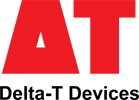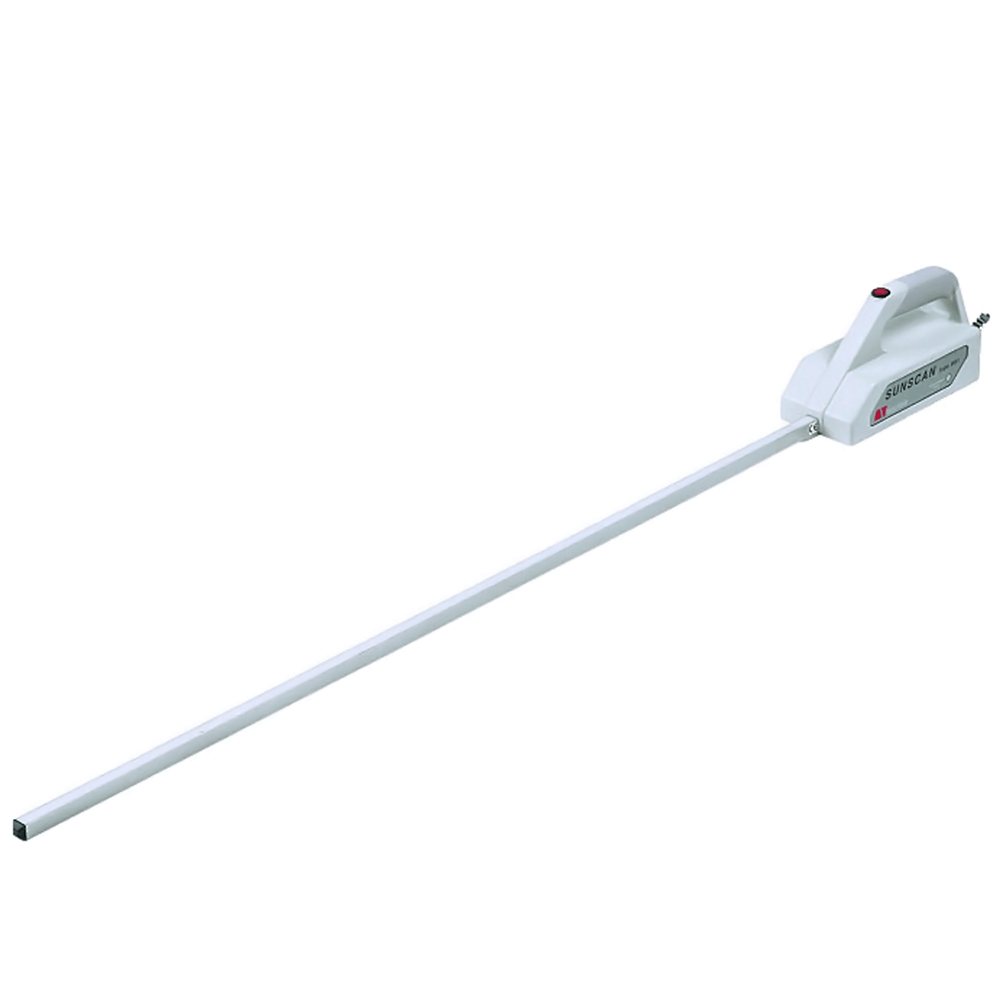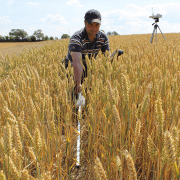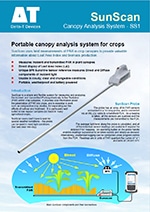- Overview
- Specification
- Accessories
- Product Resources How to Buy
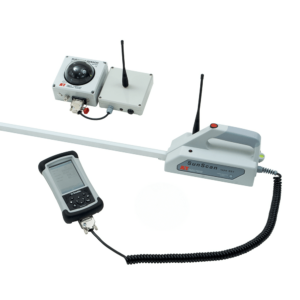
Testimonials
- Measures incident and transmitted PAR in canopies
- Direct display of Leaf Area Index (LAI)
- Usable in cloudy and clear conditions
- Proven, research-grade canopy analyser
- Ideal for phenotyping applications
The SunScan plant canopy analyzer system uses field measurements of Photosynthetically Active Radiation (PAR) in crop canopies to provide valuable information about Leaf Area Index (LAI) and biomass production.
Video – The SunScan System
The SunScan plant canopy analyser is optimised for accurate PAR measurement in low, uniform canopies, such as those found in most agricultural crops.
The 1m probe enables rapid spatial averaging of large areas and PAR mapping for non-uniform crops such as vineyards and orchards. With the unique BF5 reference PAR sunshine sensor, the SunScan plant canopy analyser can be used in most weather conditions.
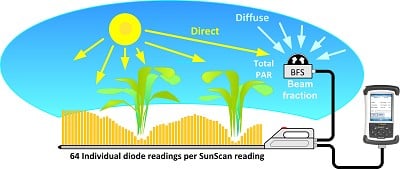
Three configurations are available:
| SS1-COM Complete System
This is the complete package of SunScan items, including SunScan Probe, SunData Software, PDA, BF5 Sunshine Sensor, tripod and carrying case. |
The full system provides a powerful canopy analysis tool. It can instantly calculate LAI, measure PAR interception using either spot readings or unattended logging, and measure sunflecks. |
| SS1-COM-R4 Complete System with Radio Link
Includes a radio link between the modified SunScan Probe and BF5 Sunshine Sensor. |
The radio link has a range of 100 m to 200 m and replaces the cable between the SunScan Probe and BF5 – particularly useful in taller canopies or where readings are required at widely spaced locations. |
| SS1-STD3 Standard System
The Standard system comprises the SunScan Probe, SunData Software and PDA. |
The Standard System is able to make the full range of SunScan measurements, including LAI. The probe has to serve as its own above-canopy reference, so requires steady light conditions. |
Ease of use
The SunScan plant canopy analyzer probe consists of 64 PAR Sensors embedded in a 1 m long probe. Whenever a reading is taken, all sensors are scanned and the measurements sent to a hand-held PDA, type RPDA3, via an RS232 interface. The average PAR level from the Probe is read, but all 64 individual readings can be stored for more complete PAR mapping, or making linear transects. Automatic logging can be selected to obtain readings over a period of time at a fixed point. If connected to a data logger the Probe can function as a Linear Quantum Sensor (also known as a line quantum sensor).
Rugged PDA
The RPDA3 is an exceptionally robust handheld PDA which collects and analyses readings from the SunScan Probe. Raw readings, and derived functions such as LAI, can be displayed, reviewed and stored in the field by the SunData Software; groups of readings can be averaged if required. Readings are stored in the internal memory which holds > 1 million readings, or in widely available micro SD cards which provide removable data storage. Collected data can be transferred easily to a PC.
Unique above-canopy reference sensor
The SunScan’s unique feature is an optional reference sensor, integrated into the design, to measure simultaneously the direct and diffuse light above the canopy. The BF5 Sunshine Sensor provides these above-canopy reference measurements quickly and conveniently. The BF5 uses an array of photodiodes and a unique shading pattern to calculate whether the sun is shining and to measure the direct and diffuse components of solar radiation. This completely avoids the need for troublesome shade ring adjustments required with conventional diffuse light sensors.
Radio Link option
An optional radio link connects the SunScan Probe and the BF5 reference sensor, removing the need for long connecting cables. The link operates over the 434 MHz licence-free frequency and can transmit up to 250 m line-of-sight or 100 m to 200 m in vegetation.
SunScan comparison with Li-Cor LAI-2000
A 2009 paper* in the Crop Science journal compared the use of SunScan canopy analyser and LAI-2000 systems for estimating LAI on upland rice grown in Benin. The authors found that the SunScan canopy analyser provided a highly significant measurement of LAI up to 4 m2.m-2 compared to destructive sampling (slope of regression line = 1.00, R2 = 0.96) and in summary concluded that the SunScan can be used to estimate LAI of different upland rice cultivars with various types of canopy development. * Sone, C., K. Saito, and K. Futakuchi. 2009. Comparison of Three Methods for Estimating Leaf Area Index of Upland Rice Cultivars. Crop Sci. 49:1438-1443.
Specification
| SunScan Probe type SS1 | |
| Active area | 1 m x 13 mm wide, sensor spacing 15.6 mm |
| Spectral response | 400 – 700 nm (PAR) |
| Measurement time | 120 ms |
| Maximum reading | 2500 µmol.m-2.s-1 |
| Resolution | 0.3 µmol.m-2.s-1 |
| Linearity | better than 1% |
| Accuracy | ± 10% |
| Analogue output | 1 mV per µmol.m-2.s-1 |
| Serial interface | RS232, 9 pin female ‚ÄòD’ connector |
| Environmental | IP65, 0 – 60°C working temp |
| Size & Weight | 1300(l) x 100(w) x 130(h) mm, 1.7 kg |
| Power | 4 x AA Alkaline cells (lifetime up to 1 year) |
| Sunshine Sensor type BF5 | |
| Output sensitivity total & diffuse | 1 mV / µmol.m-2.s-1 PAR cosine corrected |
| Accuracy | Total ± 12% ± 10 µmol.m-2.s-1 Diffuse ± 15% ± 10 µmol.m-2.s-1 |
| Temperature range | -20 to + 50 °C with alkaline batteries |
| Range | 0 – 2500 µmol.m-2.s-1 (total & diffuse) |
| Spectral response | PAR (400-700 nm) |
| Power | 2 x AA Alkaline cells (lifetime up to 1 year) |
| Input voltage | 5 – 15 V DC (powered from SunScan) |
| Size & Weight | 120 x 122 x 95 mm, 635 g |
| Rugged PDA type RPDA3 | |
| Screen | Sunlight readable |
| Operating system | Android |
| Display options | a) LAI b) PAR average c) ALL individual sensor readings |
| Environmental | IP67, -30 °C to 60 °C, 1.2 m drop test |
| Power | Rechargeable battery, 12 h continuous use |
| Memory | > 1 million readings |
| Size & Weight | 191 x 80 x 35 mm, 490 g |
Accessories
Hardware
Main components and software
Mountings and enclosures
Installation accessories
Cables and networks
Remote communications
Spares and consumables
Power options
Other
Product Resources
Data Sheets
Case Studies
-
SunScan case study - Exploring relationships between LAI, water consumption, and crop coefficient 504 KBFilename: sunscan_case_study_vines_-ver-1-0
